Headed to Granada in Spain? It has a distinctive cuisine from both the rest of Andalusia and Spain. With its special geographical location and unique blend of international influences, foodies will love exploring the local food and drink scene. So, here are all the best foods to try in Granada!
Pro Tip: Planning what to do on your trip to Granada? Bookmark this post in your browser so you can easily find it when you’re in the city. Check out our Granada guide for more planning resources, our top Granada tours for a memorable trip, and the best restaurants near the Alhambra.
Best Foods To Eat in Granada
Granada has a distinctive cuisine from that of both Andalusia and the rest of Spain. The food is influenced by the city’s relatively high altitude, its proximity to the Mediterranean tropical coast (also known as the “Greenhouse of Europe”), and its unique blend of Roman, Greek, Jewish, and Arabic influences.
With its free tapas culture, there’s no better place to try different kinds of food. So, without further ado, here are the best foods to try in Granada!
10. Dishes Common To All of Andalusia


The cities of Andalusia and their citizens have many long-standing rivalries from who has the best football team to the most authentic flamenco, the grandest Moorish alcazaba, and who serves the best tapas.
People may well come to blows over which is the better beer: Malaga’s Victoria, Cordoba’s La Mezquita, Seville’s Cruzcampo, or Granada’s Alhambra. However, there are some tapas and dishes common to all Andalusian cities that everyone can agree on.
Rabo de toro. It’s a slow-braised bull or ox tail with ancient Roman origins—the tails traditionally came from bulls defeated in the bull-fighting ring.
Gazpacho and Salmorejo. Another Roman dish popularized in Andalusia is the cold tomato soup of gazpacho or salmorejo, which is topped with ham and boiled egg. These dishes have many cousins such as Ajoblanco, which replaces the tomatoes with ground almonds, and Porra, which is made from various crushed or ground main ingredients.
Berejenas con Miel de Caña. These are battered and fried eggplant sticks covered in cane honey (or cane sugar molasses), which gives it its caramel fragrance and slight licorice after-taste.
Jewish artichokes and albondigas. Served with the same sticky dressing are often-fried artichokes of Jewish tradition. And another dish thought to be of Jewish origins is albondigas, meatballs served in sauce.
Patatas a lo Pobre. Known as “poor man’s potatoes”, these are fried, thinly sliced potatoes, onions, red and green peppers, and egg—particularly satisfying in the winter months.
Huevos Rotos. Though you’ll find these all over Spain, these fries covered in runny “broken eggs” are elevated to new heights by the local cured ham: jamón serrano.
Where to get them: Anywhere in Granada, as well as Malaga, Antequera, Jaen, Cordoba, and Seville. La Cueva de 1900 has restaurants serving Andalusian cuisine in every major town across the region. My favorite is La Cueva de 1900 on the corner of the elegant Plaza Santa Ana square.
9. Middle Eastern and Other Typical Sweets and Desserts
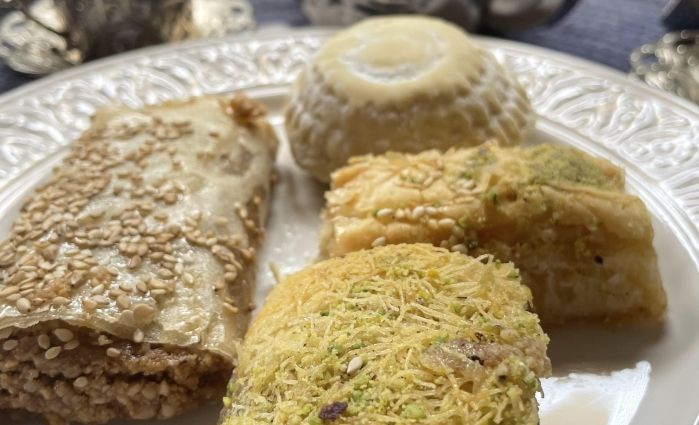

In no other city in Spain is the Middle East closer than it is in Granada. Tea parlors line the cobbled streets of the Calle Elvira and Calderería Nueva, and are scattered across the northern and eastern parts of town. And they serve all the most famous sweets you’d find anywhere in the Arab and Jewish world.
You’ve come to the right place if you’re looking for almond, walnut, and pistachio pastries; rose-water and honey syrup drenched delicacies; or date-filled semolina butter cookies. Whether it’s a Baklava or Ma’amoul, a deep-fried Pestiño, or a Sephardic Buñuelo, they’re all here.
For an interesting experience, head to the entrance of the Catholic convent of Santa Catalina de Zafra. The nuns will sell you cookies and pastries through a rotating wooden barrel. All you have to do is call out what you want, hand over your money, and they’ll spin the barrel around with your sweets.
Finally, you have to try the Maritoñi—the sweet every local had in their school snack boxes growing up. It’s a biscuit with a middle layer of “angel’s hair,” or syrupy pumpkin fibers. You’ll see little packets of it in every corner shop and supermarket in Granada.
Where to get them: Calle Elvira and Calderería Nueva are just across the road from the Cathedral. Along the beautiful riverside street of Carrera del Darro is the convent Santa Catalina de Zafra. Otherwise, anywhere in town.
8. Migas de Graná


In Granada, bread accompanies every meal. For breakfast and brunch, grated tomato makes for a topping. At lunch, it’s accompanied by some cured ham or avocado. For dinner, it goes with anything and everything. So, locals will buy fresh bread up to three times a day.
To make migas, they soak leftover bread in water. Then, they squeeze out the excess, break it into pieces, and fry it with garlic, green or red peppers, and some kind of meat like chorizo, bacon, or pork rind. Add some freshly-chopped winter melon or perhaps some freshly-picked grapes, and you’ve got Migas de Graná.
Where to get it: An emblematic bar for those who frequent the old city center is Bodegas Castañeda. There you’ll find migas, a great variety of tapas, and a fine selection of vermouths, as well as a rather dangerous house cocktail of wine, vermouth, and vodka named after a little town a few minutes to the North-West of Granada, Calicasas.
Not ready to book a tour? Check out how to visit the Alhambra.
7. Caracolá
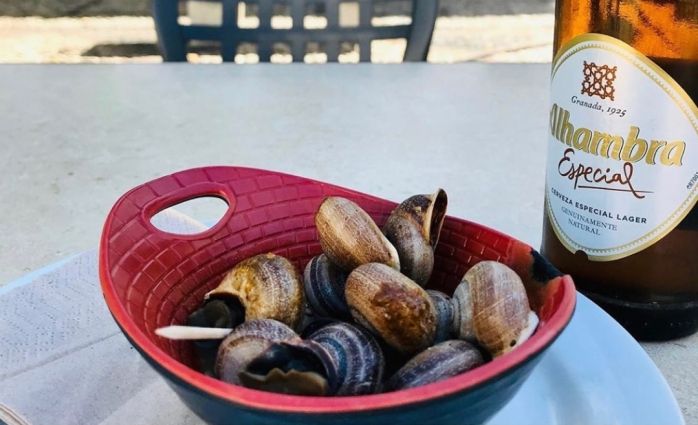

When you think of eating snails, you think of French escargots cooked in garlic, butter, and parsley. However, cultures across Europe and North Africa eat snails and they all have their own way of preparing them.
Given Granada’s close connection with the Arab world, it’s no surprise that, here, snails are prepared in a rich, dark, spicy soup just as they are in the mountains of Morocco.
French chefs tease escargots from their shells, toss them in garlicky butter, and gently place them back where they came from. In Granada, they cook them directly in their shells after a thorough washing.
Then, into the pot go bay leaves, fennel, cloves, cumin, of course, some garlic, a touch of spicy pepper, and, quite often, a secret ingredient. About 15 minutes later, the snails begin to puff out from their shells and are ready to serve in their spicy, earthy broth.
Where to get it: At the top of the Moorish Albaicín quarter is the Plaza Aliatar. On the left of the square with plenty of tables spread about is the family-run Bar Aliatar Los Caracoles. They have been preparing caracoles for four generations and they serve the dish with Granada’s own beer, Alhambra 1925.
6. Habas con Jamón a la Granaina
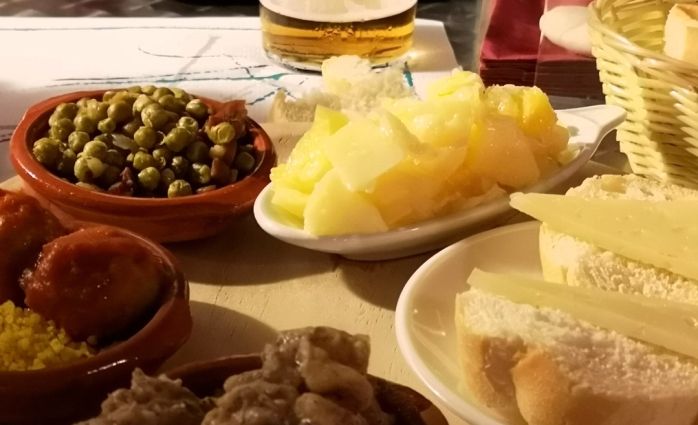

This broad bean and ham recipe is famous the world over. It’s also one of the reasons all kinds of tapas are served in those little red terracotta bowls, which have Arabic origins.
The beans and ham are ubiquitous. But few know that the origins of the dish are, in fact, Granaino. Not only did the city’s Arab connection play a part in its invention, but also its semi-mountainous location.
It can get pretty cold in winter—nights are often cooler by as much as 40 degrees Fahrenheit, or 20 degrees Celsius. So, from November to March, city-center temperatures are often sub-freezing in the morning. And many houses still have a rudimentary heating system of a stove under the dining room table with a long-skirted tablecloth, called a mesa camilla.
What better way to warm the winter chills in your bones than with a steaming hot bowl of tender broad beans, fresh spring onion, extra virgin olive oil, aromatic white wine, and the punchy flavor of ham—all prepared in a few minutes.
The beans come from the Vega, the plains to the south of Granada. The olive oil comes from the sea of trees on the undulating hills stretching to the north. However, the real secret to the extraordinary taste of Granada’s Habas con Jamón, for me, is the white wine and Trevélez Serrano ham from the southern slopes of the Sierra Nevada.
Where to get it: In the winter months, you’ll get Habas con Jamón just about anywhere in Granada where they serve food. The best time to eat this dish is during the broad bean harvest in late winter and early spring. Go to Sancho Original at one end of the shopping district, or Tocateja to get it.
5. Tortilla de Sacromonte
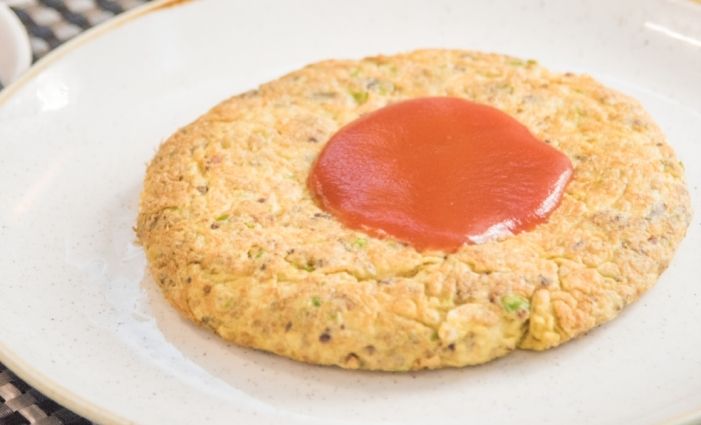

Spain’s definitive comfort food is tortilla—the Spanish omelette. You’ll find it everywhere. It’s a deceptively simple two, at most three, ingredient recipe, but incredibly difficult to perfect.
The best will have a slightly crispy exterior with a gently oozing interior, and every grandchild is convinced that their abuela (granny) makes the very best in the world.
The Tortilla de Sacromonte is somewhat different. Its history dates back to the 18th century. Legend has it that the night before the feast of Saint Cecil, the Patron Saint of Granada, thieves ransacked the kitchens of the Abbey of Sacromonte.
The abbot had planned a hearty dinner of roast lamb for the town’s dignitaries. With no way of canceling (they had already begun the trek up the steep hill of the “Sacred Mountain,” from the center of town), the friar chefs whipped up an omelette and threw in what was left of the lamb. Specifically, the brains and testicles they’d already removed, and a bit of marrow. They also added a few peas and some grated stale bread, and they hoped for the best!
Later versions of the dish included walnuts, Trevélez ham, and even chorizo. However, the fact that the recipe survives today, in its various interpretations, is a testament to its success on that bygone February 1. Locals swear by it, and, indeed, eat it all year round, at any moment they feel like celebrating their proud heritage.
Where to get it: Los Manueles—a chain of restaurants serving everything locals hold dear to their hearts. My favorite Los Manueles is in a little square next to the Cathedral.
4. Pionono
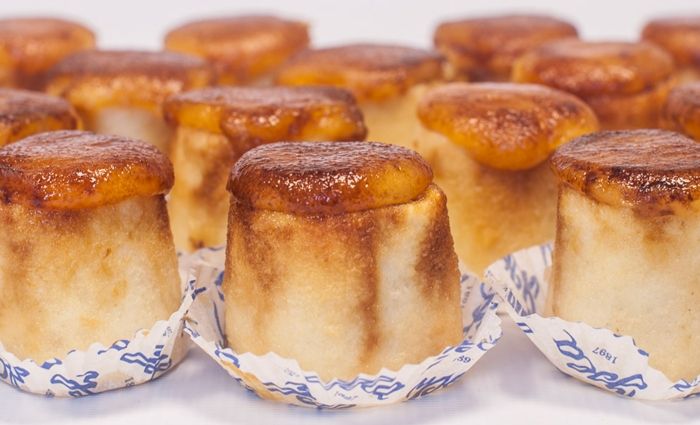

Just 10 minutes outside of Granada is the historic, walled town of Santa Fe. This is where the Catholic Monarchs signed the “Capitulaciones”, essentially the contract with Christopher Columbus that would eventually lead to the discovery of the Americas.
At the end of the 19th century, this is where Ceferino Isla invented the Pionono—a dessert that is now synonymous with the entire Province of Granada.
Isla dedicated his new dessert to Pope Pius IX, who had finally confirmed in the dogma, the centuries-long belief of Catholics that Mary had conceived without “original sin.” He named it “Pio Nono”, Italian for Pius IX, and modeled the shape of the dessert on his portly, cylindrical figure.
This dessert is a roll of sponge, imbibed with cinnamon syrup and topped with custard cream, caramelized with a red-hot iron paddle, symbolizing the pope’s skull cap.
After a good meal, and perhaps a coffee, there’s nothing better than this short, sharp hit of sweetness. No matter how much you’ve eaten, you’ll certainly always find room to demolish a Pionono in just one bite or two!
Where to get it: You’ll find Piononos practically everywhere in Granada. If you want to honor the memory of the original inventor, head to an Ysla café. This chain of cafés is run by the descendants of Ceferino Isla himself. You’ll find the most central Ysla on the corner of Granada’s main square of Bib-Rambla.
3. Remojón Granadino
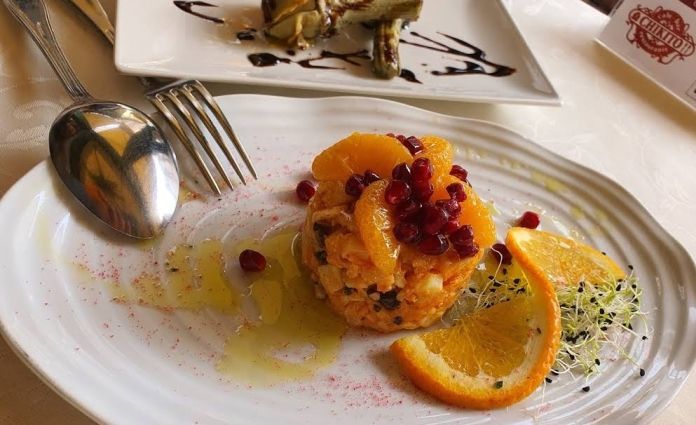

Remojón means a “big soak” and it refers to oranges soaked in olive oil. It’s another extraordinary sweet and savory combination and it hails, once again, from the Arab world.
However, the ingredients are strictly locally-sourced—oranges ripened under the Andalusian sun and the finest extra virgin olive oil, which has a spicy kick to it. Apart from the quartered orange and olive oil, there are many variations of the dish’s other ingredients.
Into the soak, most recipes throw freshly caught codfish, or washed salt-cod, chopped spring onion, whole or halved black olives, diced boiled egg, white wine or sherry vinegar, occasionally some potato, and a peppering of paprika. The result is a fresh, nutritious, and one-of-a-kind summer salad.
Where to get it: You’re sure to find Remojón, as well as all the other classic local dishes, at Bar-Café-Restaurante Chikito right in the center of town. While you’re there, say hello to the world-renowned poet and writer Federico García Lorca, a brass statue sitting quietly at a table in the corner.
2. Breua de Pollo
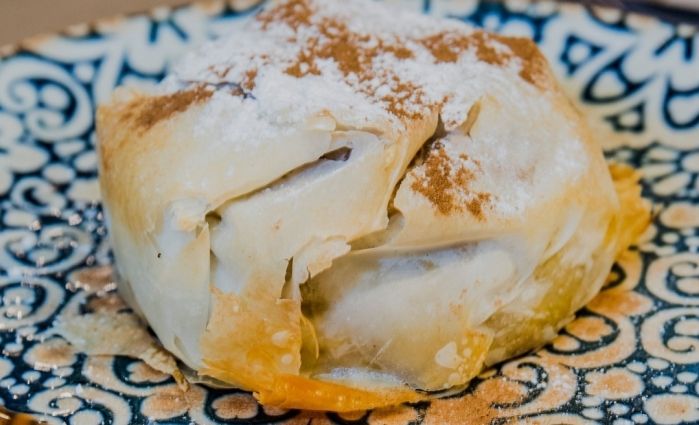

These parcels of flaky pastry with saffron and cinnamon-infused chicken are delightfully sweet and savory. They’re also extremely popular in neighboring Morocco.
There are, of course, numerous ways of preparing them as outlined in family recipes proudly handed down from generation to generation. Top chefs are also endlessly tweaking them to perfection. They also go by various names. Some call the smaller ones breua; others call the bigger, pie-like version pastels, or pastela moruna.
What is common of all versions, however, is the crunchiness of the outer pastry and the exotically spiced chicken. The flavor comes from the saffron, ginger, coriander, mint, peppermint, and basil.
Finally, various sources of sweetness come into play such as raisins or sultanas, or sometimes dates, and the whole thing is sprinkled with confectioner’s sugar.
Where to get it: The smart, boutique restaurant Biloba in the center of town prides itself on its pastela. Another of the finest breuas I’ve ever tasted was in the terraced gardens of the hotel Parador De San Francisco, right at the heart of the Alhambra.
Not ready to book a tour? Check out our Granada Guide for more resources.
1. Jamón Serrano de Trevélez
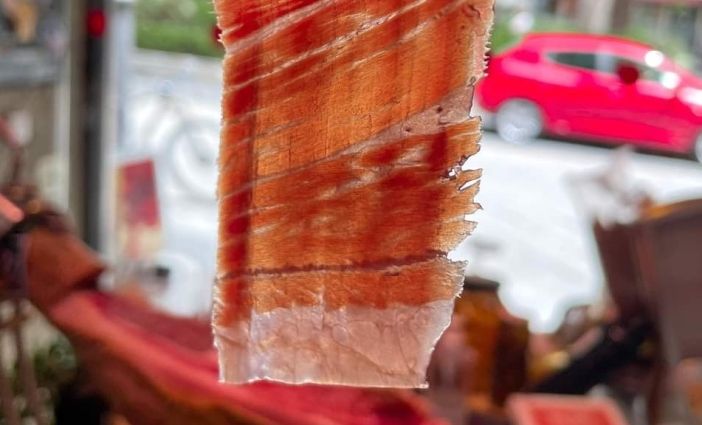

You can eat cured ham anywhere in the world, but it won’t compare to the cured ham of Granada and its province. If you prefer Italian Parma Ham or Portuguese Presunto, that’s only because you’ve never tried Jamón Serrano de Trevélez. Once you try it, there’s no going back!
Arguably, the best-cured ham in the world comes from hills just outside Granada—from a group of villages called the Alpujarras, and Trevélez in particular, that cling to the gentler southern slopes of the Sierra Nevada. The area produces a type of Spanish ham known as Serrano, which means it comes from the sierra (the mountains).
Trevélez is one of the highest southernmost municipalities in Spain. With an extremely dry climate, surprisingly cold winters, and cool summers, it’s perfect for naturally air-curing legs of ham for longer periods of time. It is done with very little salt and no preservatives or additives. All this makes Jamón Serrano de Trevélez sweeter, pinker, and richer in flavor than any of its counterparts, anywhere in the world.
Where to get it: Go and visit Ivan at his boutique, Ibérica, on the tree-lined boulevard of Carrera de la Virgen. It’s right next to the magnificent Basilica of the Virgen de las Angustias. Ivan is a professional cortador (ham cutter) and will artfully slice from a whole leg of ham.
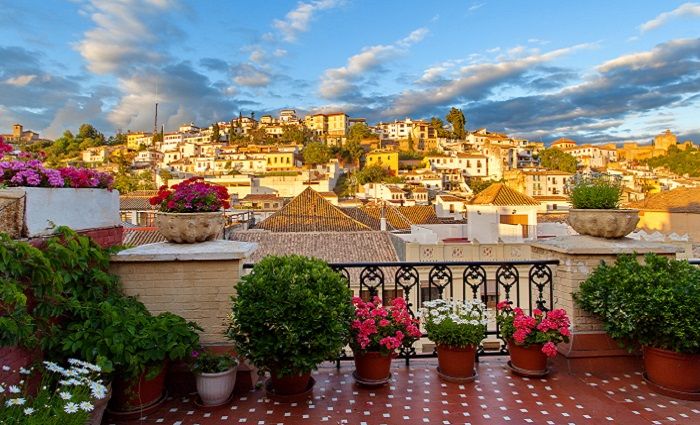

Where To Stay in Granada
Granada, Spain, is worth visiting to see the massive Alhambra. Find out where our local experts recommend staying in this ancient city. You’ll find great hotel deals that will make your stay memorable.

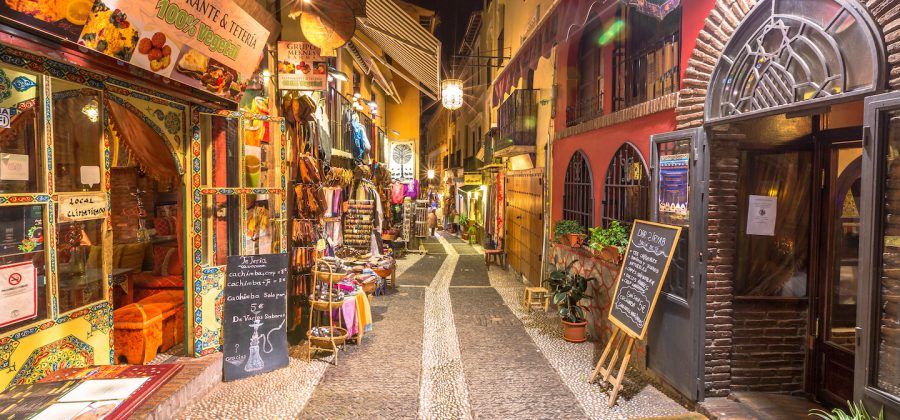

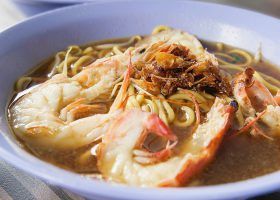
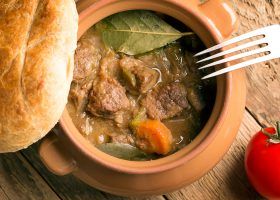
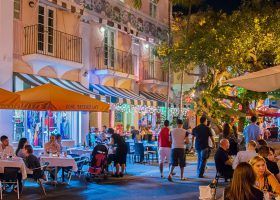




Leave a Comment